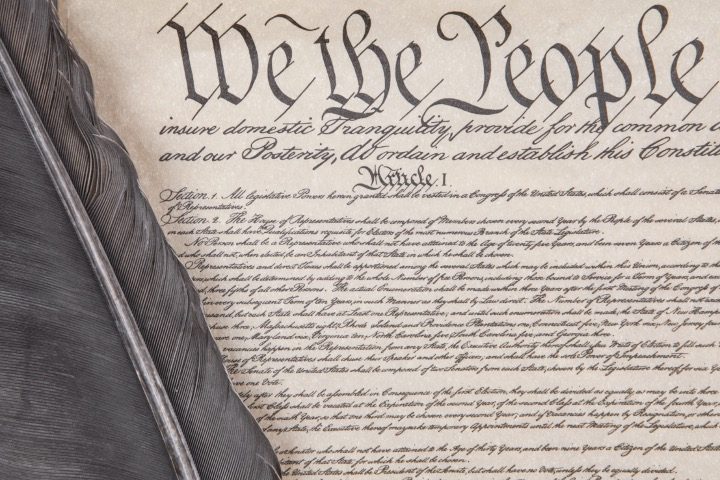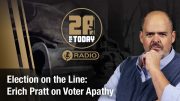
Those who make unjust and wicked statutes for the people, violating their own promises and oaths, do not make laws, rather they enact something not worthy of that name, as laws, to be truly laws, must be just and must be made according to the principles establishing the limits of their authority. — Cicero, On the Laws
Regulating the Regulations: Chevron, the Court, and the Constitution
In the realm of administrative law, the Chevron doctrine, originating from the U.S. Supreme Court’s 1984 decision in Chevron U.S.A., Inc. v. Natural Resources Defense Council, Inc., stands as a pivotal yet controversial principle. This doctrine requires courts to defer to administrative agencies’ interpretations of ambiguous statutes within their jurisdiction. While ostensibly promoting governmental efficiency and expertise, a deeper examination from a constitutional viewpoint unveils serious concerns. These concerns not only challenge the Chevron doctrine’s validity but also question its compatibility with the U.S. Constitution. This article argues for the overturning of the Chevron doctrine by the Supreme Court, citing its fundamental unconstitutionality.
After four decades marked by extensive regulatory and judicial upheaval, the situation has escalated to a peak that has necessitated the intervention of the Supreme Court.
Currently, the Court is set to deliberate on two significant cases: Loper Bright Enterprises v. Raimondo, originating from the District of Columbia Circuit, and Relentless v. Department of Commerce, hailing from the 1st Circuit.
Both companies, Loper Bright Enterprises and Relentless, are family-owned and operate in the New England herring fishing industry. They are governed by the Magnuson-Stevens Act, which oversees fishery management in federal waters.
Under this act, the National Marine Fisheries Service (NMFS) mandated that herring boats, typically small vessels with a crew of five to six, must also accommodate federal monitors to oversee regulatory compliance. Subsequently, without explicit statutory authorization, the NMFS imposed an additional requirement on Loper Bright and Relentless to cover the monitors’ salaries. The NMFS estimated these costs at $710 per day, a sum that could surpass the earnings from a day’s catch.
Both the District of Columbia Circuit and the 1st Circuit upheld this rule, interpreting statutory silence as an “ambiguity” warranting Chevron deference.
When granting certiorari in these cases, the Supreme Court formulated a two-part query for the parties involved: “Whether the Court should overrule Chevron; or, at least clarify that statutory silence concerning controversial powers expressly but narrowly granted elsewhere in the statute does not constitute an ambiguity requiring deference to the agency.”
This approach mirrors the sentiments some justices have previously expressed in their opinions.
The following is a constitutional and historical analysis of the issue.
Erosion of Separation of Powers
A core tenet of the U.S. Constitution is the separation of powers, a mechanism designed to prevent tyranny by dividing government authority among three branches.
James Madison, paraphrasing the Baron Montesquieu, who himself was paraphrasing Polybius, wrote:
The accumulation of all powers, legislative, executive, and judiciary, in the same hands, whether of one, a few, or many, and whether hereditary, self-appointed, or elective, may justly be pronounced the very definition of tyranny.
The Chevron doctrine, however, muddies this clear separation by allowing executive branch agencies to assume legislative and judicial roles. When agencies interpret statutes, they often cross the line from enforcing laws to effectively making and judging them. This concentration of power in administrative agencies runs counter to the Constitution’s intent and structure, undermining a foundational principle of American governance.
Judicial Abdication and Diminished Oversight
Central to the critique of the Chevron doctrine is its encouragement of judicial abdication. Courts, under Chevron, often relinquish their primary responsibility of interpreting the law, deferring instead to agencies’ interpretations. This deference weakens the judiciary’s role as a check on executive and legislative powers, diminishing its capacity to guard against overreach. The consequence is a lopsided power dynamic where administrative agencies, not courts, become the primary interpreters of laws, eroding the judicial safeguard envisioned in the Constitution.
Threat to Individual Liberty and Economic Freedom
From a constitutionalist viewpoint, individual liberty and minimal government intervention are paramount. The Chevron doctrine, by empowering administrative agencies to broadly interpret laws, potentially leads to an expansion of government regulations that can encroach upon individual freedoms and economic liberties. This deferential approach grants agencies significant leeway, often resulting in regulations that stretch far beyond the original scope of the legislation, infringing upon the rights and freedoms that constitutionalists hold dear.
Electorate Accountability and Nondelegation Concerns
The Chevron doctrine also poses electorate accountability issues. Agencies, unlike elected officials in Congress, are not directly accountable to the electorate. Their broad interpretative powers under Chevron lead to a deficit of republicanism, as the public has limited means to challenge or influence these interpretations, interpretations given the color of law, without the contribution or control of the people’s representatives in Congress.
Moreover, this situation raises concerns regarding the nondelegation doctrine, which posits that Congress cannot delegate its legislative powers to other entities. By enabling agencies to make quasi-legislative decisions, Chevron effectively allows for an indirect delegation of power, potentially violating this constitutional doctrine.
Potential for Arbitrary and Inconsistent Decision-making
A further critique of the Chevron doctrine is its potential to result in arbitrary and inconsistent decision-making. Administrative agencies, influenced by changing political climates and priorities, may interpret statutes inconsistently over time. This inconsistency can lead to uncertainty and instability in the law, as regulated entities struggle to comply with shifting interpretations. The absence of a stable, predictable legal environment is antithetical to the principles of the rule of law and fairness, cornerstones of a constitutionally sound legal framework.
Implications for Regulatory Overreach
The broad interpretive power granted to agencies under Chevron can also lead to regulatory overreach. Agencies may use their interpretive authority to expand their regulatory scope far beyond what Congress intended. This overreach not only strains the limits of executive power but also leads to a proliferation of regulations that can stifle economic activity, innovation, and individual enterprise, all critical concerns for constitutionalists who advocate for a limited government role in economic affairs.
The Need for Restoring Constitutional Fidelity
Overturning the Chevron doctrine would signify a crucial step toward restoring constitutional fidelity. It would reassert the importance of the separation of powers, ensuring that each branch of government remains within its constitutional boundaries. Additionally, it would reinforce the judiciary’s role in interpreting laws, thus ensuring that interpretations remain consistent, stable, and unbiased by the political winds of the executive branch.
Conclusion
The Chevron doctrine, while designed to streamline administrative processes, fundamentally conflicts with key constitutional principles and republican values. It disrupts the balance of power among government branches, leads to judicial abdication, threatens individual liberties, lacks electorate accountability, and potentially violates the nondelegation doctrine. It also fosters a legal environment marked by unpredictability and overregulation.
For proponents of constitutionalism, overturning the Chevron doctrine is not merely a legal necessity, but a moral imperative. It represents a return to the Constitution’s original framework, emphasizing limited government, individual liberty, and a clear separation of powers. If our union is to carry on, it is essential that its legal foundations remain true to these principles, ensuring that government power is appropriately checked and balanced, and individual freedoms are duly protected. The Supreme Court, in reevaluating the Chevron doctrine, has an opportunity to reaffirm these constitutional commitments, reinforcing the bedrock upon which American law and liberty stand.



